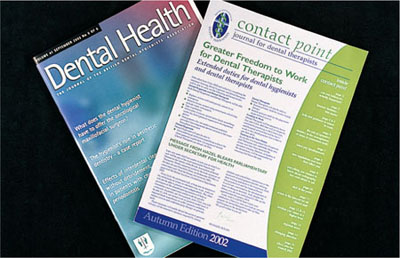Chapter 2
Medicolegal Aspects of Employing Professionals Complementary to Dentistry
Aim
The aim of this chapter is to guide the practitioner through the recruitment and retention of staff who will form a coherent and effective dental team.
Outcome
As a result of reading this chapter the practitioner should have an awareness of the responsibilities involved in the employment of PCDs.
The Role of the General Dental Council
Several references to the General Dental Council are made throughout the book and it is therefore pertinent to begin this chapter with a brief overview of the role of the GDC:
-
Protecting the public by the regulation of dental professionals in the United Kingdom.
-
Registering dentists and PCDs.
-
Maintaining high standards of personal and professional conduct.
-
Ensuring high standards in dental education.
-
Requiring dentists to take part in continuing professional development.
-
Taking action in the case of concern over a dental professional’s fitness to practise.
The Role of the Employer
The practice principal is the employer of staff and consequently has to comply with employment legislation. It is not the role of this book to consider all aspects of employment but to highlight relevant aspects of the employment and management of PCDs in the primary care setting.
Recruitment
The dentist may legally designate almost all non-surgical management of periodontal disease to a dental hygienist or dually qualified dental therapist. The new employee will of course require the provision of a suitably equipped surgery and access to the support of a dental nurse (Chapter 4).
Recruitment is currently difficult due to the limited resource of qualified dental hygienists and therapists. These personnel are trained in relatively small numbers compared to undergraduate dentists and the vast majority are women who, owing to domestic and economic factors, may not be versatile in their geographic location when seeking employment. In a study by Hillam (2000), spanning a 21-year period, of graduates from Liverpool School of Dental Hygiene, only 6% recorded any difficulty finding jobs and 83% reported job satisfaction. The majority work in general dental practice and data suggest they are likely to continue to work in their chosen career, at least as long as female dentists do in theirs.
Bearing these factors in mind, the practitioner must decide whether to advertise locally or nationally. The British Dental Hygienists Association (BDHA) and the British Association of Dental Therapists, (BADT) publish journals in which advertisements may be placed (Fig 2-1). Contacting training schools or word of mouth via friends and colleagues may also be productive. Care must be taken, in the latter situation, not to breach the equal opportunities legislation.

Fig 2-1 Journals of the British Dental Hygienists Association and the British Association of Dental Therapists.
The more information given in the advertisement, the better informed the potential applicant will be, and consequently the employer will not waste time interviewing staff who do not fulfil the required criteria. The majority of dental hygienists work part-time in one or more practices and may not be able to accommodate specific day requirements. Flexibility of days and hours will broaden the potential recruitment base.
Write a job description and a person specification
A written job description and person specification will fulfil two important purposes. The potential applicant will be informed of the details of the post and this will form the basis of the contract of employment later. The person specification allows the employer to reference criteria required against qualifications, experience and personal qualities offered by the applicant. It also provides the evidence for shortlisting for interview.
The practice may prefer the completion of a customised application form or request the applicant to submit a current curriculum vitae from which to cross check their qualifications. Issues, which may be explored at interview, are the work experience, in particular any gaps in the employment records, and the applicant’s continued professional development record. An applicant who is well prepared would present a portfolio of verification of courses recently attended. The applicant should also indicate two persons who may be contacted for references, one of whom should be the current employer, or in the case of new graduates, an authorised school official.
Arranging the interview
It is courteous to set time aside to interview applicants to allow a full discussion and questions. Whilst a tour of the practice during the working day is very helpful to the applicant, it is not appropriate to conduct the interview during a surgery session. A room should be designated and an interview panel selected. Each member should have decided, in advance, the issues they wish to explore and a chairperson should be appointed to coordinate the interview. It is not necessary to ask the applicants the same questions, but it helps if the questions are similar, because this enables objective comparisons to be made and the responses formulated into a numerical score. The questions should not be discriminatory on any grounds, e.g. sex, culture, religion or age. The interview should not be conducted in:
-
the surgery whilst working
-
the reception area where the patients may overhear
-
a setting that is too informal (Fig 2-2).

Fig 2-2 Not the ideal environment for an interview.
The following should all be clarified during the interview:
-
Terms and conditions of service.
-
Equipment provision.
-
Nursing support.
-
Appointment scheduling.
-
Practice protocols.
-
Training and development.
-
Method of remuneration.
The applicant as well as the employer needs time to reflect, therefore it is normal to inform the applicant when a decision will be made and by what method they will be informed. Be honest. If there are others to interview there is no harm in telling the applicant. The interpretation of references by potential future employers may vary, but if they are not pursued, then the option of obtaining information about the applicant before making a decision is closed.
Offer of employment
This must be in writing, outlining the terms of service and a suggested date for commencement. The employer should request confirmation in writing from the future employee. It is also courteous to inform unsuccessful candidates.
Document verification
Every employee should have a personal file in which copies of documents are held.
The employer must have sight of the following original documents, of which photocopies are taken for the personal file.
-
/>
Stay updated, free dental videos. Join our Telegram channel

VIDEdental - Online dental courses


